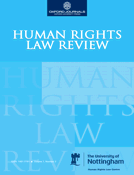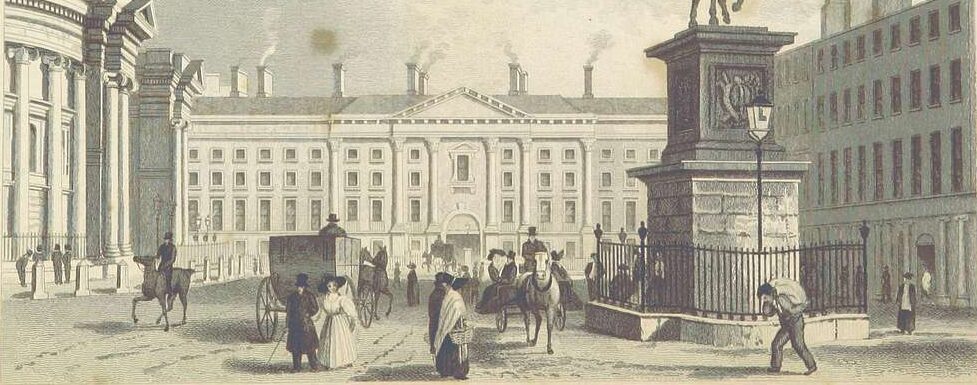Roman Smetana, a bus driver from the eastern city of Olomouc, defaced several dozen campaign posters plastered on city buses before the 2010 general election. Deeply disillusioned with politics, he embellished candidates of all stripes with insect antennae and scribbled sneers on the posters. … the governing centre-right Civic Democratic Party (known as ODS from its Czech initials) filed a legal complaint … [and] the judge … ordered him to pay 15,500 Czech crowns (now $790) in damages and to … [spend] 100 days in jail. …
Smetana, whose acts earned him a tabloid nickname, the Driver Antenna, argues that he is no vandal “I’ve read a philosophical essay according to which political advertisement is just communication with voters. So, I, a voter, communicated with them, and on space designed for communication,” …
Category: Sedition
Indian cartoonist arrested for sedition, writes @GreensladeR in @guardian
The arrest of a renowned cartoonist in India on charges of sedition has triggered a wave of criticism across the country.
Aseem Trivedi – see his Wikipedia profile – was arrested in Mumbai at the weekend for cartoons that are said to mock the Indian constitution. He was also charged with insulting the national flag.
One of his Cartoons Against Corruption drawings depicted the national emblem as comprising wolves in place of lions.
Freedom of expression, the ECHR, and Turkey: recent developments
 Two recent cases in the European Court of Human Rights demonstrate that there are still large gaps in the protection of freedom of expression in Turkey.
Two recent cases in the European Court of Human Rights demonstrate that there are still large gaps in the protection of freedom of expression in Turkey.
Terrorist speech
In Gözel and Özer v Turkey (43453/04 and 31098/05; 6 July 2010 | judgment (in French); press release (in English)), a Turkish magazine published an article that contained a statement by the central committee of the banned Marxist-Leninist/Turkish Communist Party. Another published an article about the founder of the Marxist movement in Turkey which included a statement by eight people who were in custody for belonging to illegal organisations. The editors of both magazines were convicted of pubishing statements of illegal armed organisations.
The ECHR noted that the editors had been convicted for publishing texts that the domestic courts had characterised as “terrorist organisation statements” without taking into account their context or content, and held that to condemn a text simply on the basis of the identity of the author would entail the automatic exclusion of groups of individuals from the protection afforded by Article 10. It therefore concluded that since the opinions expressed did not constitute hate speech or stir up violence, the Respondent was not entitled to rely on national security to restrict the public’s right to receive information, and that Article 10 had therefore been breached.…
Free Speech, Terrorism, and European Security
 For those interested in my earlier posts on free speech and national security and terrorism and speech, a new paper on SSRN: Free Speech, Terrorism, and European Security: Defining and Defending the Political Community by Shawn Marie Boyne (Indiana University School of Law | personal site) addresses the issues, building upon her earlier paper “The Criminalization of Speech in an Age of Terror ” (SSRN). The abstract of the new paper provides:
For those interested in my earlier posts on free speech and national security and terrorism and speech, a new paper on SSRN: Free Speech, Terrorism, and European Security: Defining and Defending the Political Community by Shawn Marie Boyne (Indiana University School of Law | personal site) addresses the issues, building upon her earlier paper “The Criminalization of Speech in an Age of Terror ” (SSRN). The abstract of the new paper provides:
…In this paper I examine the impact that the struggle against terror has had on free speech protections in three European states [more precisely: the ECHR, the EU, and at member state level]. Specifically, I argue that prosecutors have overbroadly interpreted and expanded the definition of laws designed to target individuals who provide material support to terrorists. As a result, some prosecutions undertaken by European states threaten to undermine the core democratic value of free speech. By analyzing specific cases, I explore how some liberal democratic states have chosen to navigate the tension between security and liberty that Hannah Arendt [pictured, above left] referred to as the “crisis of authority.” Although I discuss each state’s relevant legislation, my primary focus is to draw distinctions and comparisons between the three countries based on recent cases that attempt to criminalize speech.
New kids on the block
 I’ve just discovered the wonderful new(ish) blog Human Rights in Ireland, a group blog about – well, the clue is in the name – human rights issues in Ireland and Irish scholarship about human rights more generally. With apologies for the nkotb title, I can say without fear of contradiction that there’s lots of great stuff there; one piece in particular caught my eye, by Fiona de Londras (pictured above left):
I’ve just discovered the wonderful new(ish) blog Human Rights in Ireland, a group blog about – well, the clue is in the name – human rights issues in Ireland and Irish scholarship about human rights more generally. With apologies for the nkotb title, I can say without fear of contradiction that there’s lots of great stuff there; one piece in particular caught my eye, by Fiona de Londras (pictured above left):
…Terrorist Propaganda or Political Speech?
In Ireland we are quite accustomed to our freedom of expression being significantly limited where that freedom is abused. This results from the express limitations in both Bunreacht na hÉireann (the Irish Constitution) and Article 10 of the European Convention on Human Rights. International law also prohibits propaganda to war as our colleague Michael Kearney has explained and examined in detail in his book The Prohibition of Propaganda for War in International Law (2007, OUP). In the United States, however, the constitutional protection of free speech (First Amendment), while not absolute, is certainly broader than is the case in Ireland or indeed under the ECHR. This makes the appeal argument by counsel for Al Hamza Ahmad Suliman al Bahlul—the only person currently in Guantánamo Bay to have been convicted of an offence relating to the ‘War on Terrorism’—all the more interesting.
FoE in the EHRLR
 The current issue of the European Human Rights Law Review ([2009] 3 EHRLR | table of contents (pdf) | hat tip ECHR blog) contains a wonderful piece by my colleague Dr Ewa Komorek entitled “Is Media Pluralism a Human Right? The European Court of Human Rights, the Council of Europe and the Issue of Media Pluralism” [2009] 3 EHRLR 395.
The current issue of the European Human Rights Law Review ([2009] 3 EHRLR | table of contents (pdf) | hat tip ECHR blog) contains a wonderful piece by my colleague Dr Ewa Komorek entitled “Is Media Pluralism a Human Right? The European Court of Human Rights, the Council of Europe and the Issue of Media Pluralism” [2009] 3 EHRLR 395.
Here is the abstract (with added links):
…The need for pluralist media stopped being purely a national concern a long time ago and thus it has for decades been subject to scrutiny by the Council of Europe and the European Court of Human Rights. Media pluralism has always come to their agenda as a prerequisite for freedom of expression guarded by Article 10 of the European Convention of Human Rights. It is important to distinguish the two ‘faces’ of media pluralism: internal (which may also be called content pluralism or diversity) and external (or structural). This article focuses on television broadcasting and argues that while the Court of Human Rights has essentially been successful in safeguarding internal pluralism, the protection of structural pluralism proved more difficult to achieve by means of the Court’s case law. This prompted the Council of Europe to step in and attempt to fill the gap with regulatory proposals.
Cowengate caricatures “didn’t bother” Cowen: why the fuss?
 On the top right hand corner of a cover of Hot Press (pictured left) runs a quote from the Taoiseach (Prime Minister), Brian Cowen:
On the top right hand corner of a cover of Hot Press (pictured left) runs a quote from the Taoiseach (Prime Minister), Brian Cowen:
Those paintings didn’t bother me
It is a teaser for a full interview with Jason O’Toole in which Cowen talks about the current economic crisis and his party’s electoral prospects. This is what he said about those paintings:
Do you read any of the political blogs written about you and your government?
No, I don’t. I’ve been too busy trying to do my job.Do you think the recent controversy over the painting was blown out of proportion?
I made no comment about it at the time. As far as I was concerned, it was obviously a stunt. I know some people thought it wasn’t in great taste, but I just stayed out of it. I have a thick enough political skin at this stage – formed over the 25 years I’ve been in this business – not to be bothered by something like that.
Cowengate: no use crying over spilt milk
Yesterday’s Times Online has a short piece which begins [with added links]
A scarf is the only thing protecting the modesty of Silvio Berlusconi, the Italian Prime Minister, in a painting of him and his Minister for Equal Opportunities, Mara Carfagna, 32, a former topless model, as angels. The work by Filippo Panseca is in a show at Savona on the Italian Riviera. Mr Panseca, 69, said that he wanted to pay tribute to the Prime Minister, 72, in the exhibition, which also includes a painting in similar style of Mr Berlusconi’s wife Veronica Lario.
The same story is also covered in The Independent, The Telegraph, and The Daily Mail. The inevitable comparisons with Cowengate were drawn by the Evening Herald, which adds that Panseca said that if
Berlusconi bought the paintings he would donate the money to the earthquake victims of Abruzzo. Mr Berlusconi has yet to comment. But he seems unlikely to buy the pictures: last year, he censored a bare nipple in a copy of a renaissance painting hung in the government press room.
More seriously, though, it seems that 144 people complained to the Broadcasting Complaints Commission about RTÉ’s coverage, 9 about the original report, and 135 about the apology; and Suzy has posted a copy of RTÉs response to the BCC regarding those complaints.…

